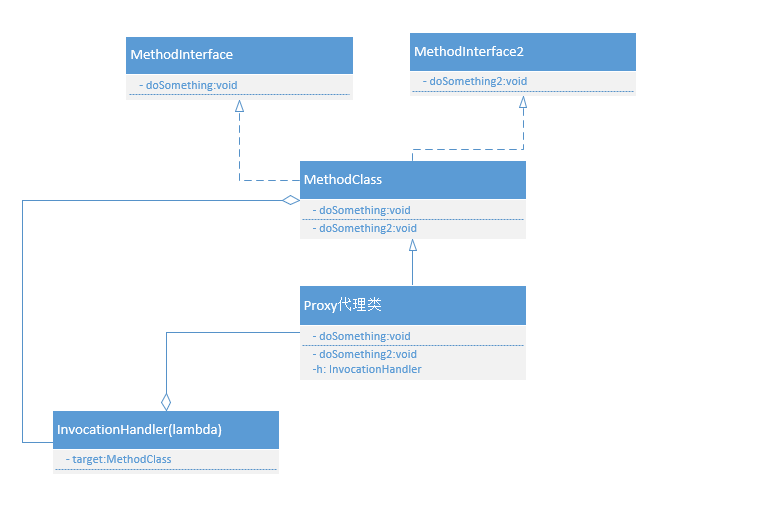1
2
3
4
5
6
7
8
9
10
11
12
13
14
15
16
17
18
19
20
21
22
23
24
25
26
27
28
29
30
31
32
33
34
35
36
37
38
39
40
41
42
43
44
45
46
47
48
49
50
51
52
53
54
55
56
57
58
59
60
61
62
63
64
65
66
67
68
69
70
71
72
73
74
75
76
77
78
79
80
81
| public static Object newProxyInstance(ClassLoader loader,
Class<?>[] interfaces,
InvocationHandler h) {
Objects.requireNonNull(h);
final Class<?> caller = System.getSecurityManager() == null
? null
: Reflection.getCallerClass();
Constructor<?> cons = getProxyConstructor(caller, loader, interfaces);
return newProxyInstance(caller, cons, h);
}
private static Constructor<?> getProxyConstructor(Class<?> caller,
ClassLoader loader,
Class<?>... interfaces)
{
if (interfaces.length == 1) {
Class<?> intf = interfaces[0];
if (caller != null) {
checkProxyAccess(caller, loader, intf);
}
return proxyCache.sub(intf).computeIfAbsent(
loader,
(ld, clv) -> new ProxyBuilder(ld, clv.key()).build()
);
} else {
final Class<?>[] intfsArray = interfaces.clone();
if (caller != null) {
checkProxyAccess(caller, loader, intfsArray);
}
final List<Class<?>> intfs = Arrays.asList(intfsArray);
return proxyCache.sub(intfs).computeIfAbsent(
loader,
(ld, clv) -> new ProxyBuilder(ld, clv.key()).build()
);
}
}
Constructor<?> build() {
Class<?> proxyClass = defineProxyClass(module, interfaces);
final Constructor<?> cons;
try {
cons = proxyClass.getConstructor(constructorParams);
} catch (NoSuchMethodException e) {
throw new InternalError(e.toString(), e);
}
AccessController.doPrivileged(new PrivilegedAction<Void>() {
public Void run() {
cons.setAccessible(true);
return null;
}
});
return cons;
}
private static Class<?> defineProxyClass(Module m, List<Class<?>> interfaces) {
byte[] proxyClassFile = ProxyGenerator.generateProxyClass(
proxyName, interfaces.toArray(EMPTY_CLASS_ARRAY), accessFlags);
try {
Class<?> pc = JLA.defineClass(loader, proxyName, proxyClassFile,
null, "__dynamic_proxy__");
reverseProxyCache.sub(pc).putIfAbsent(loader, Boolean.TRUE);
return pc;
} catch (ClassFormatError e) {
throw new IllegalArgumentException(e.toString());
}
}
|




